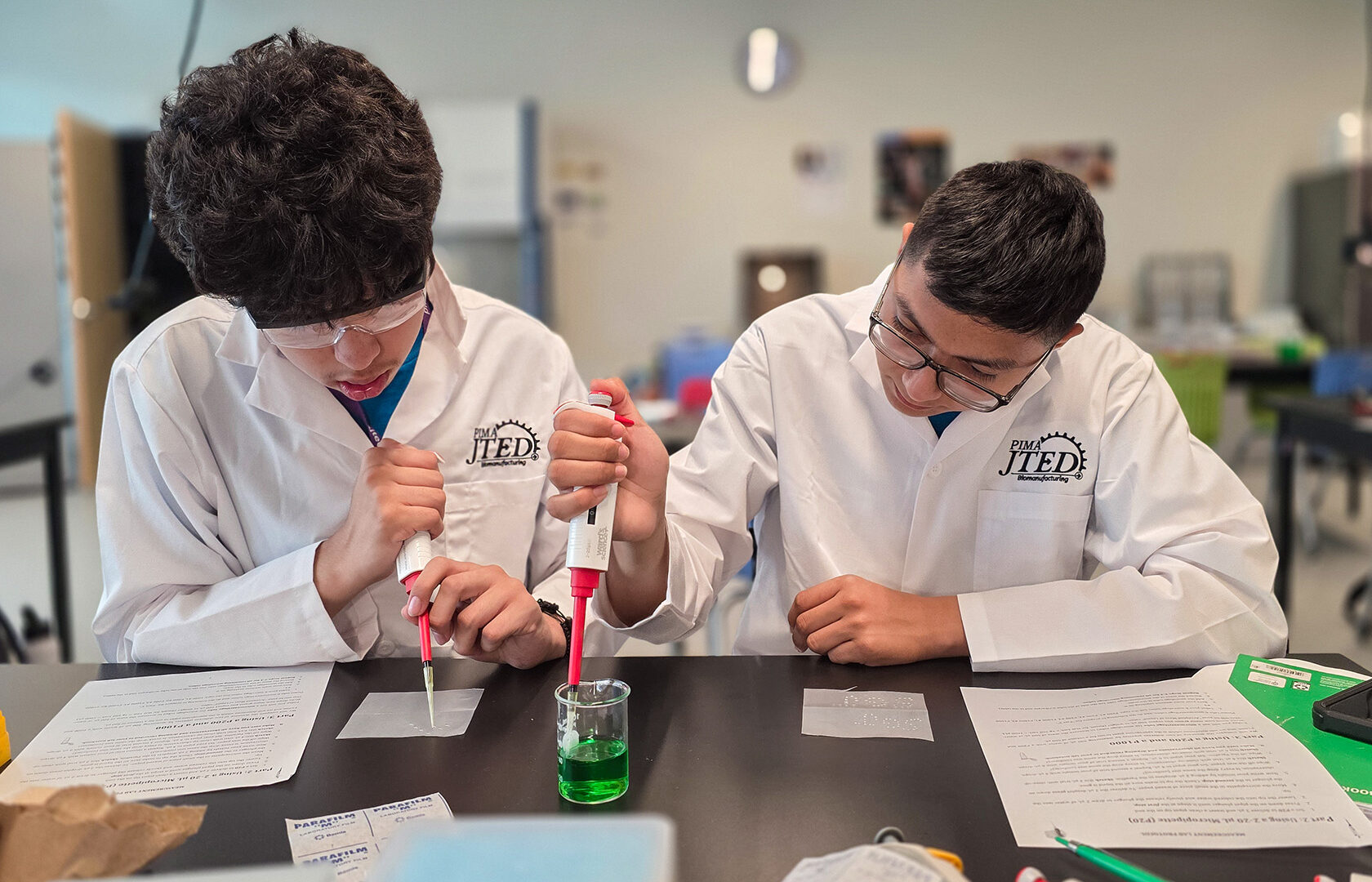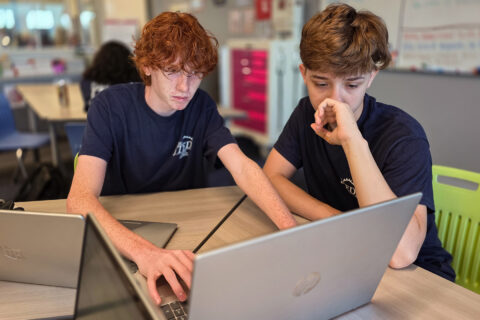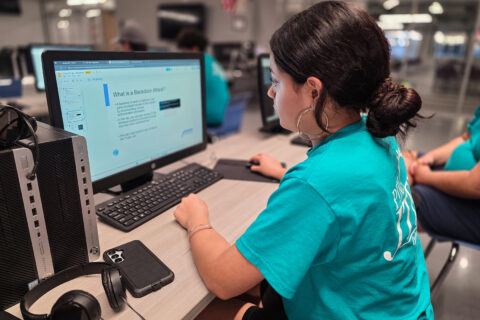Discover the process of utilizing living organisms and/or biologically- derived materials to produce biomolecules and material (such as vaccines, proteins, vitamins, bioplastics, and supplements) for applications in agriculture, the food and beverage industry, medicine, pharmacy, energy production, and many more areas.
Gain an understanding of the biomanufacturing industry, its scope, requirements, and applications. In addition to theoretical discussions, the course involves hands-on laboratory procedures
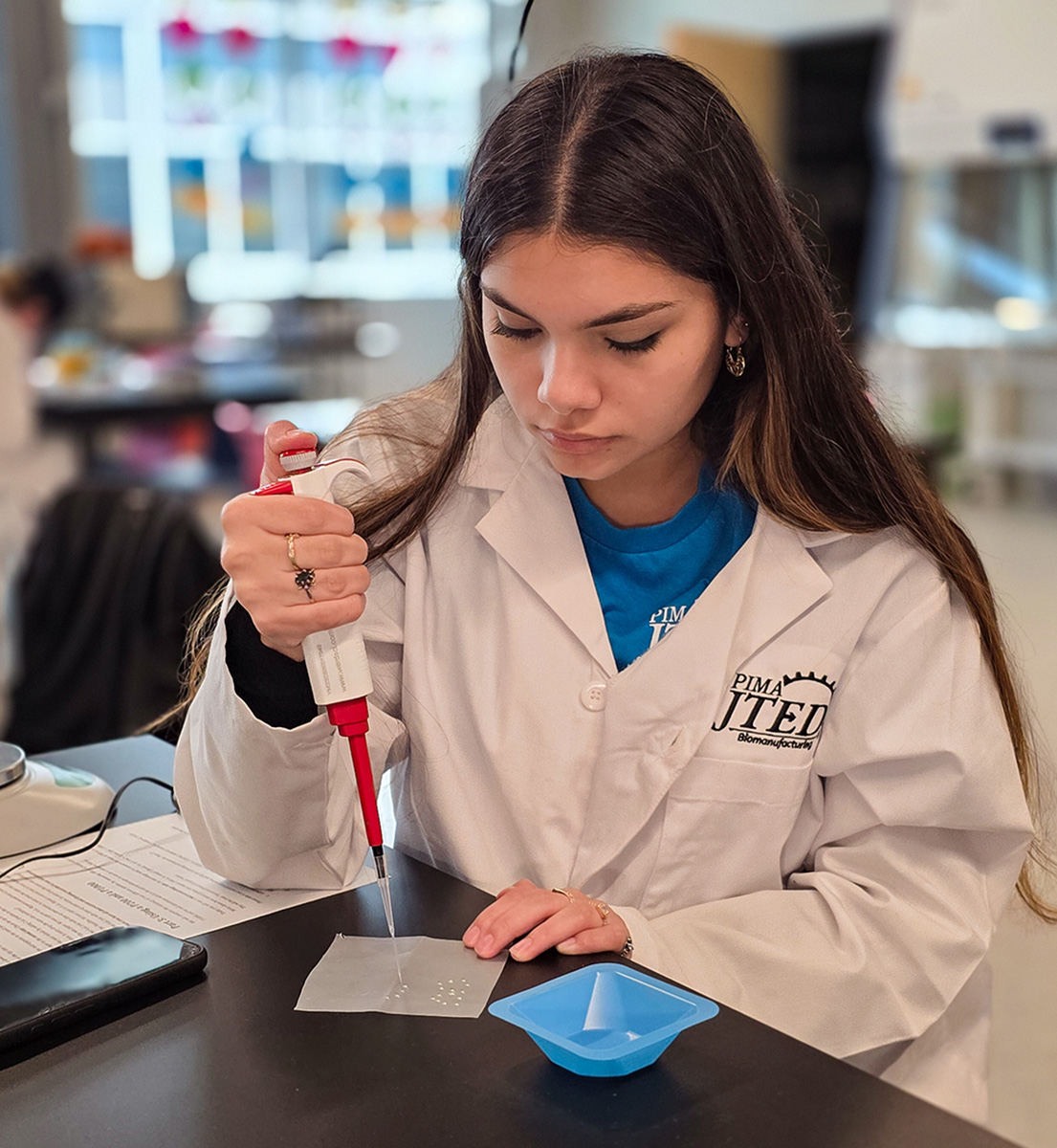
Eligibility
- Year 1:
- Grade 11
- Successful completion of 1.5 credits of science as demonstrated on high school transcript
- Submission of high school transcript
- Successful completion of, or concurrent enrollment in Biology and Chemistry are strongly recommended
Number of Years to Complete this Program
2 years to complete
Things to Consider
- Science-minded
- Ability to work as part of a team and independently
- Desire to engage in hands-on learning
Direct Employment
- Prepares students for technician-level jobs in the biomanufacturing industry as well as in more traditional medical and biological research laboratories. It also prepares for the pursuit of advanced life science studies at 2- and 4-year institutions.
Locations
JTED @ The Bridges
3300 S. Park Ave.
Schedule Availability
- Tuesdays and Thursdays, 4 – 6:30 p.m.
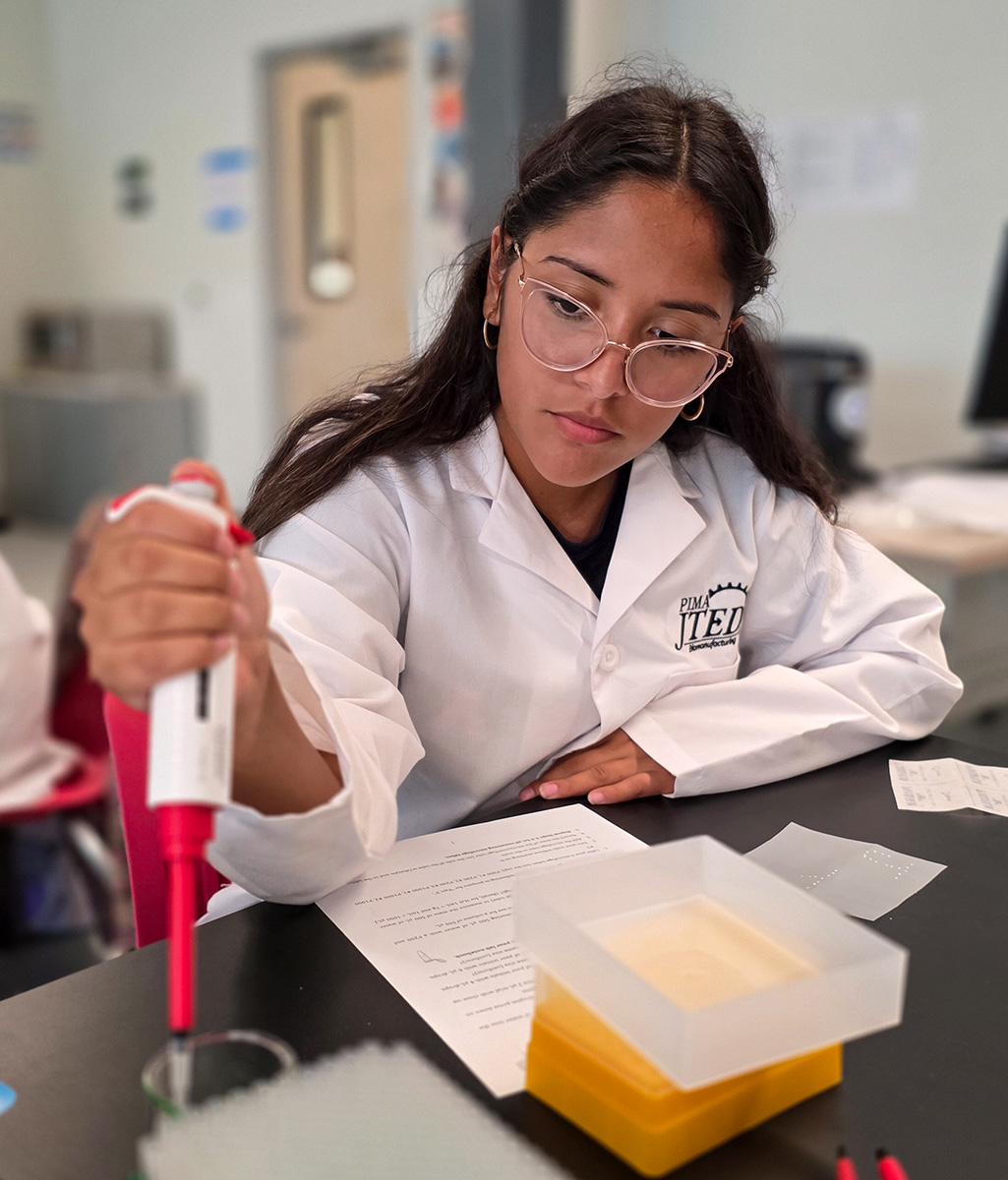
Program Completion/Sequence
Year 1
- Pipetting
- Centrifugation
- Macromolecule Identification
- Nucleic Acid Extraction
- Cheesemaking and Juice making with enzymes
- Cell Identification using Gram Staining
- Microscopy
- Yogurt making using probiotic fermentation
- Cell culturing using agar and differential media
- Restriction Enzyme Digestion
- Gel Electrophoresis
- Polymerase Chain Reaction (PCR)
- Forensic Identification of RFLPs (Restriction Fragment Length Polymorphisms)
- “Glow-in-the-dark” Bacterial Transformations with pVIB plasmid
- BLAST and DNA code alignment
- Phylogenomic Analysis and Taxonomy creation
- Identifying GMOs using genetics
- Bioremediation using transformed bacteria
Year 2
- DNA Sequencing (Sanger, through University of Arizona Genetics Core) (optional)
- Gene Editing with CRISPR
- Specialized cell culturing
- Advanced bacterial transformations (pGLO-plasmid green fluorescent bacteria)
- Buffer and solution preparation
- BLAST and MAFFT DNA alignment
- SMS Nucleic Acid Translation
- Use of NCBI and DNA Subway
- Phylogenomics
- Protein Visualization and Analysis using RCSB Protein Data Bank (PDB)
- Phylogeny creation using FASTA data
ab1. and seq. nucleic acid sequence files - DNA Spectrograms with Four Peaks Software or Chromas (optional)
- 3D Protein Structure Visualization
- Advanced DNA Extraction methods
- Statistical Analysis (t, R-squared, chi-squared, boxplots, P-values, distributions)
- Full-length scientific paper composition and simulated peer-review
Certification
- Year 1:
- OSHA
- Year 2:
- BACE
Credits
1/Year
Instructor
- Dhruva Bhattacharya, Ph.D.
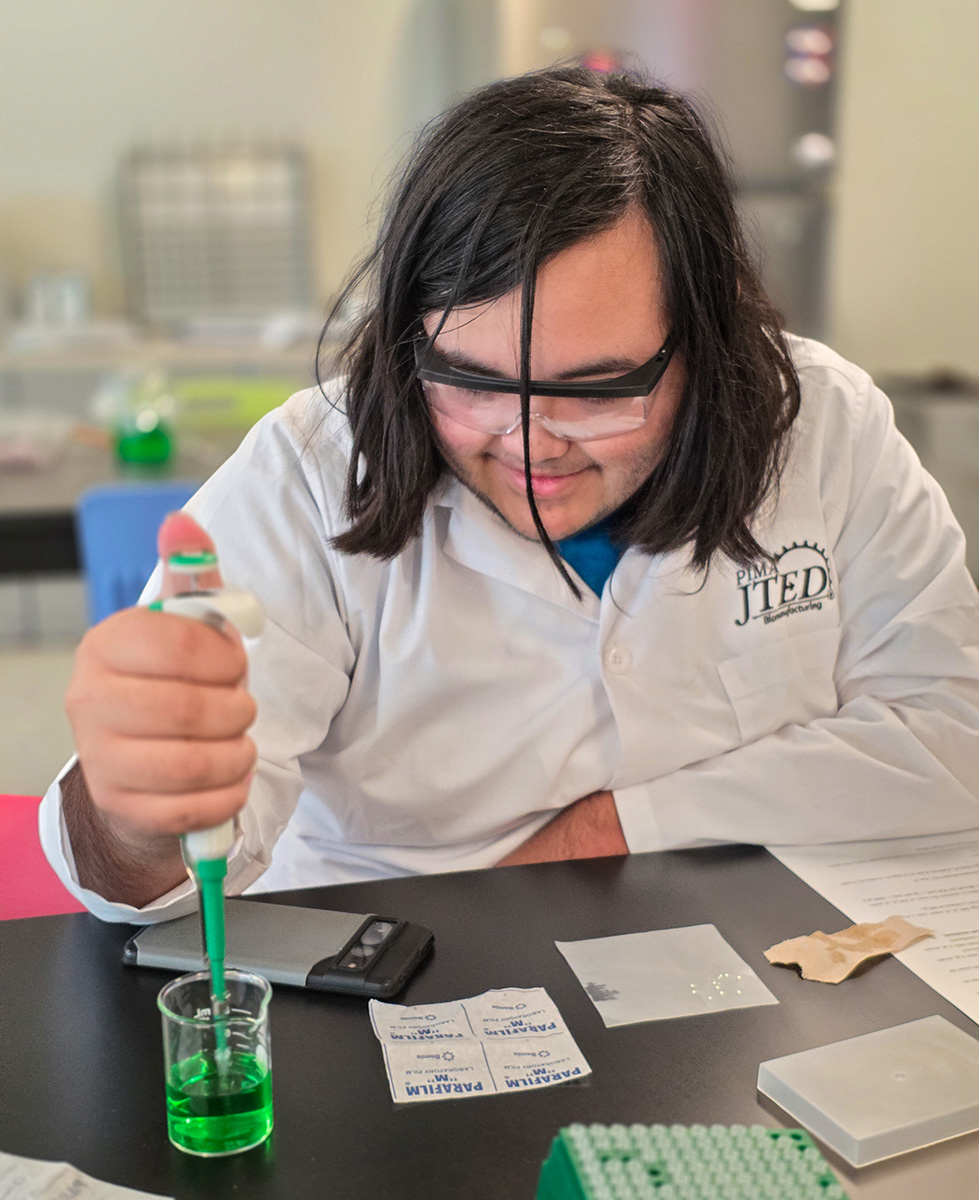
More Information
Uniform
- JTED program t-shirt
Beneficial Classes to Take in High School
Academic Classes
- Biology
- Chemistry

